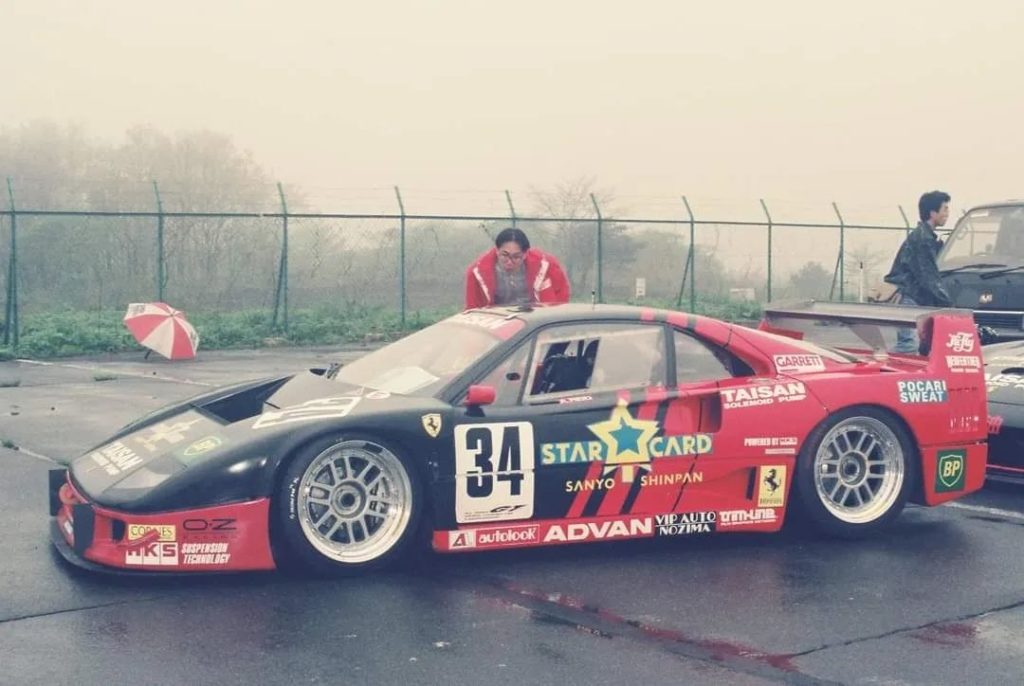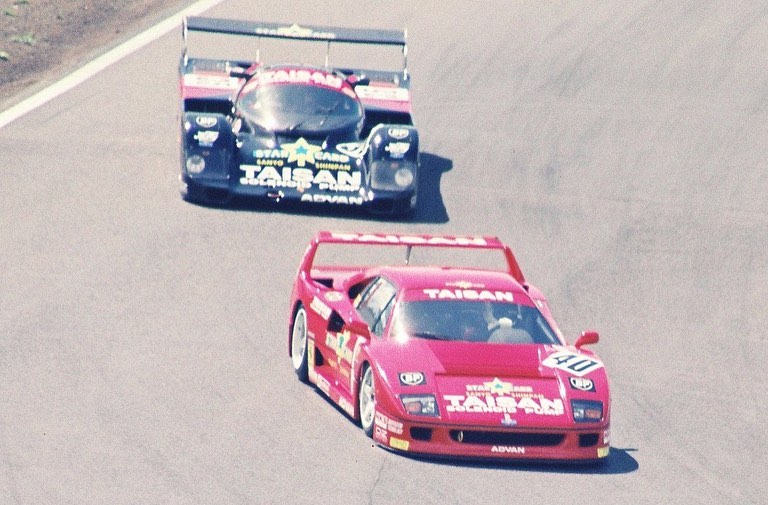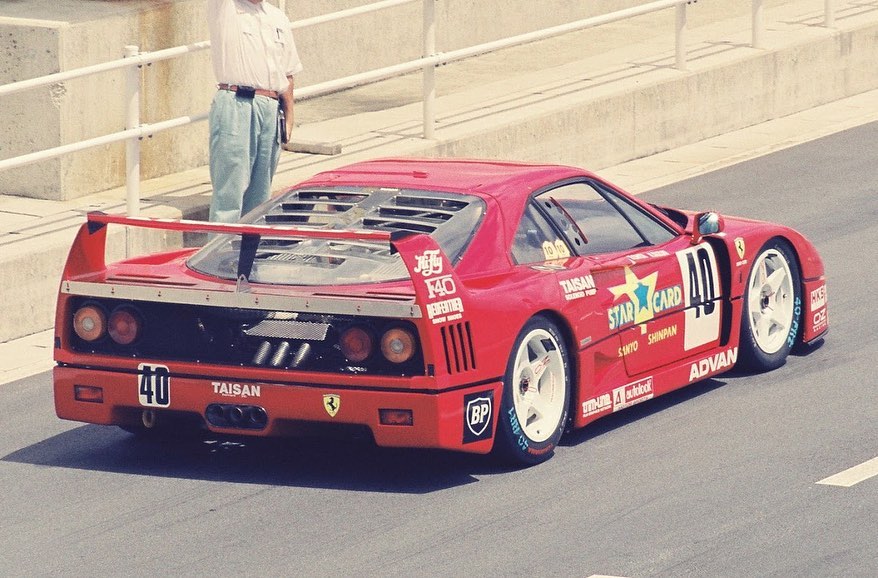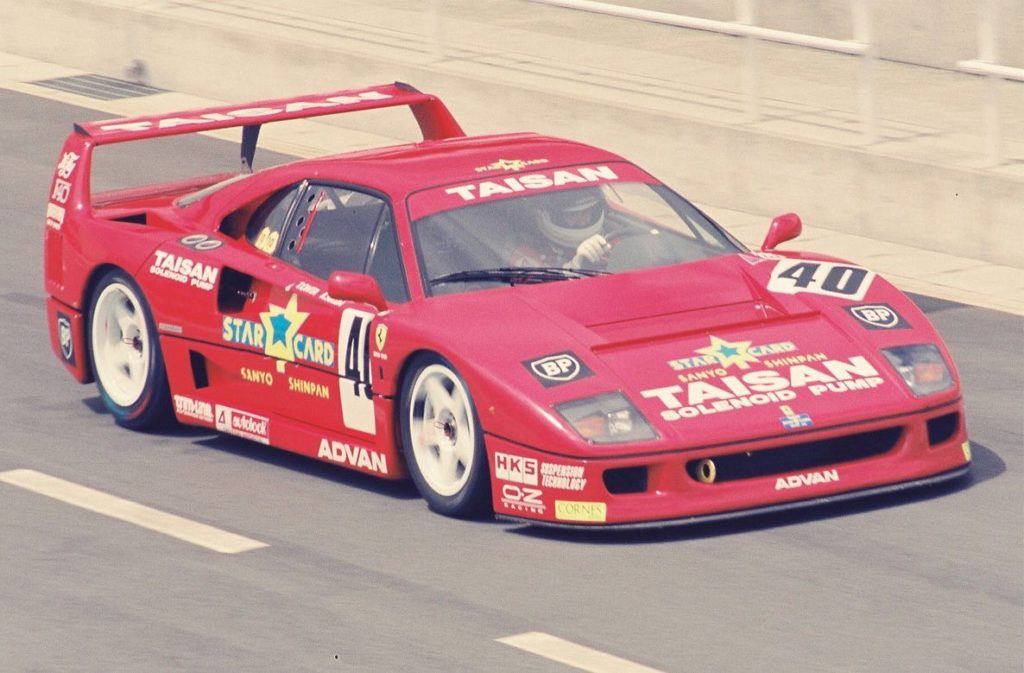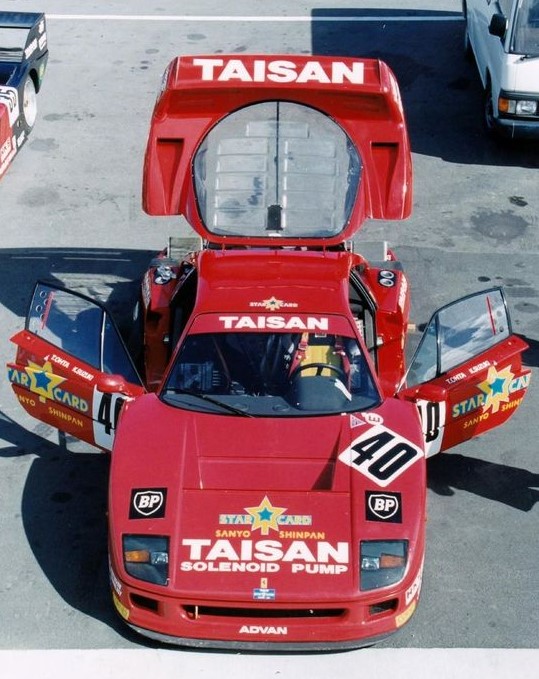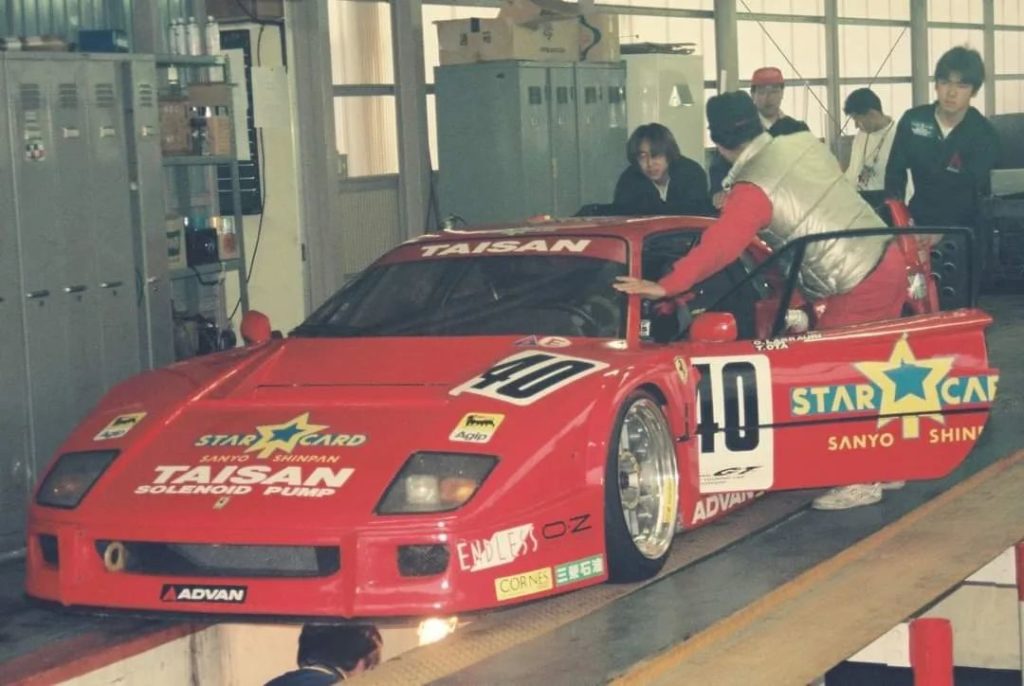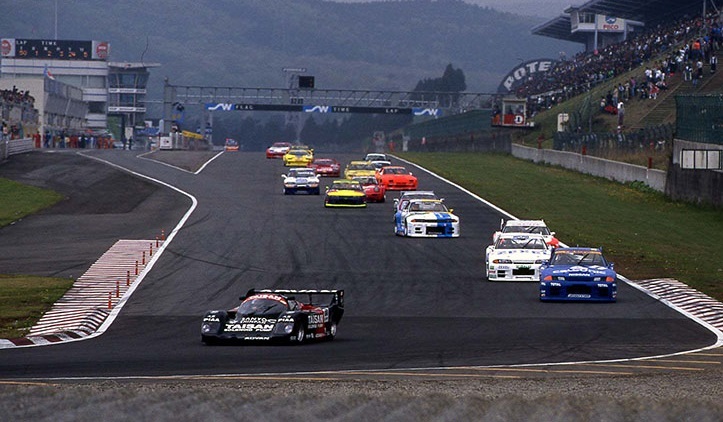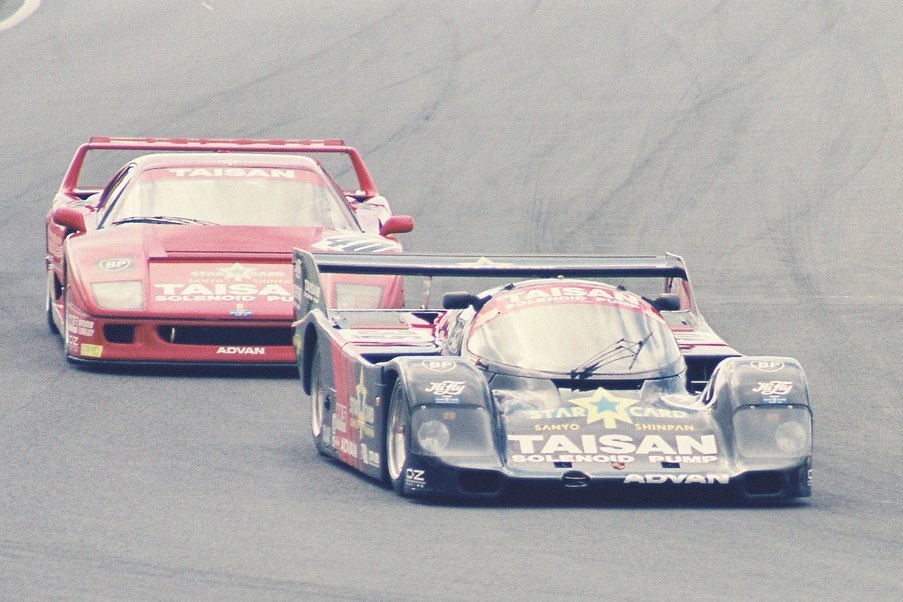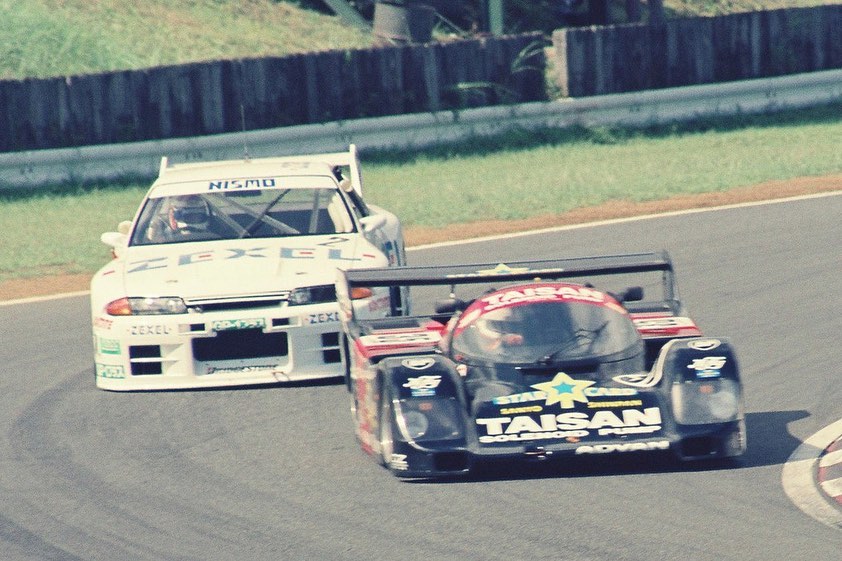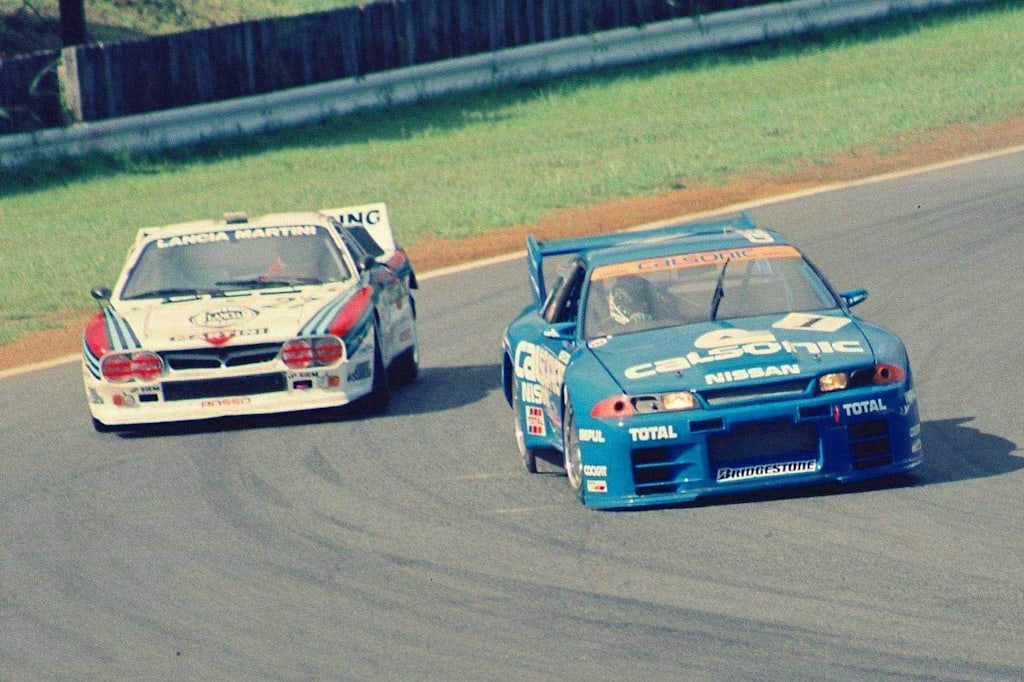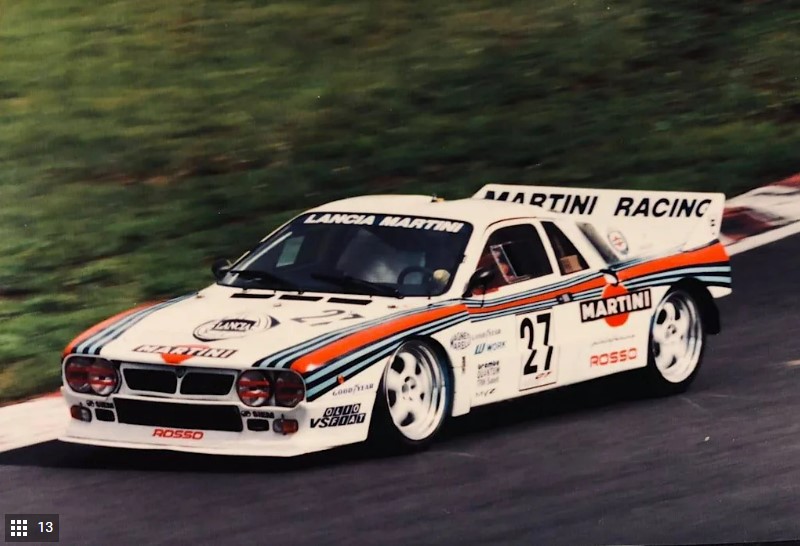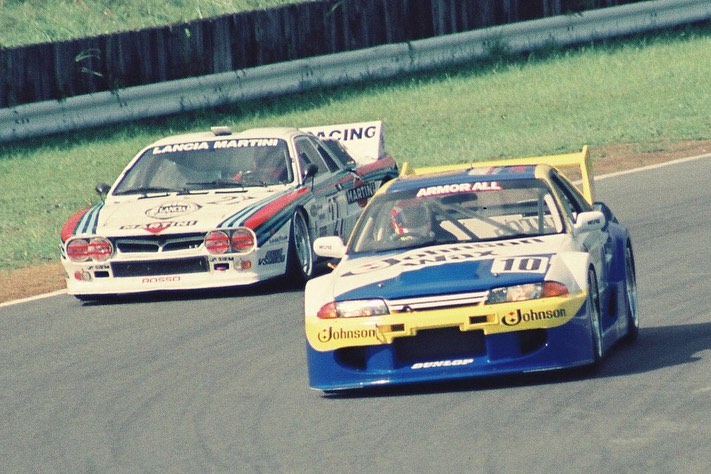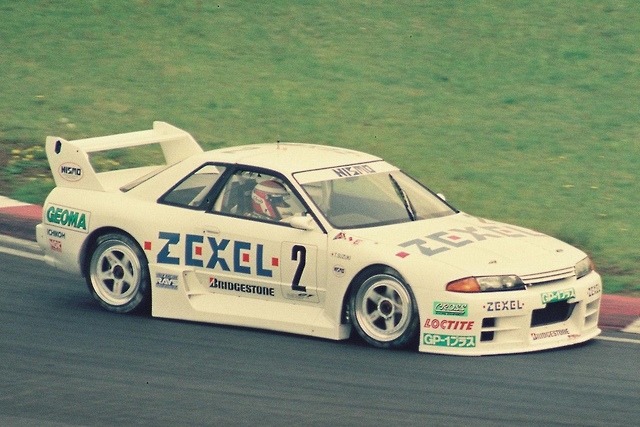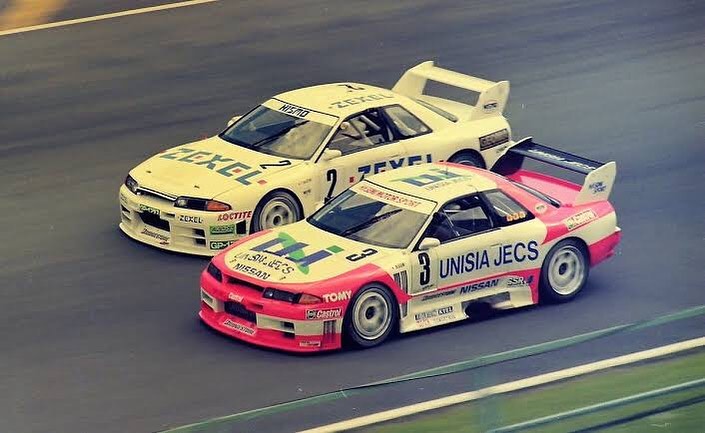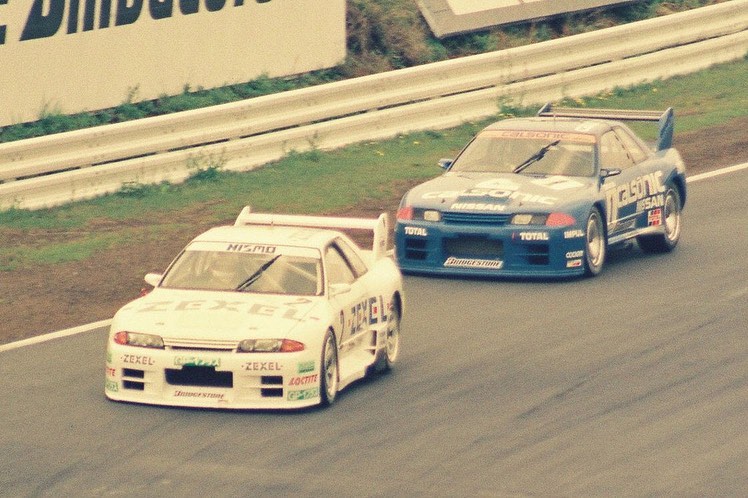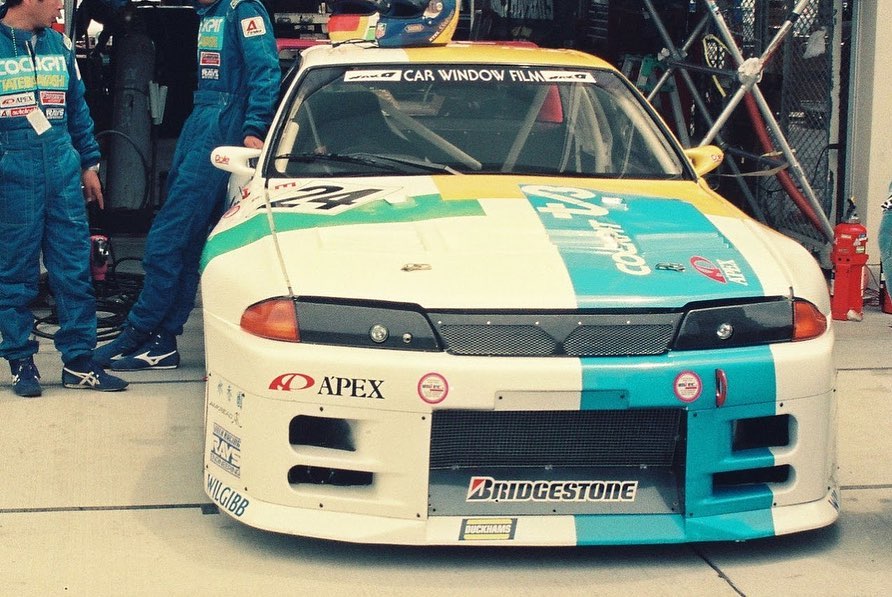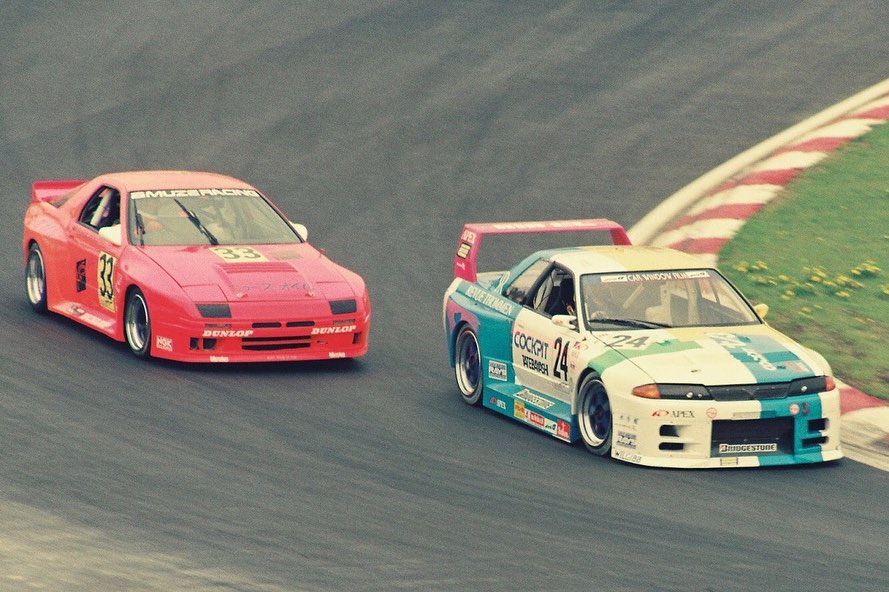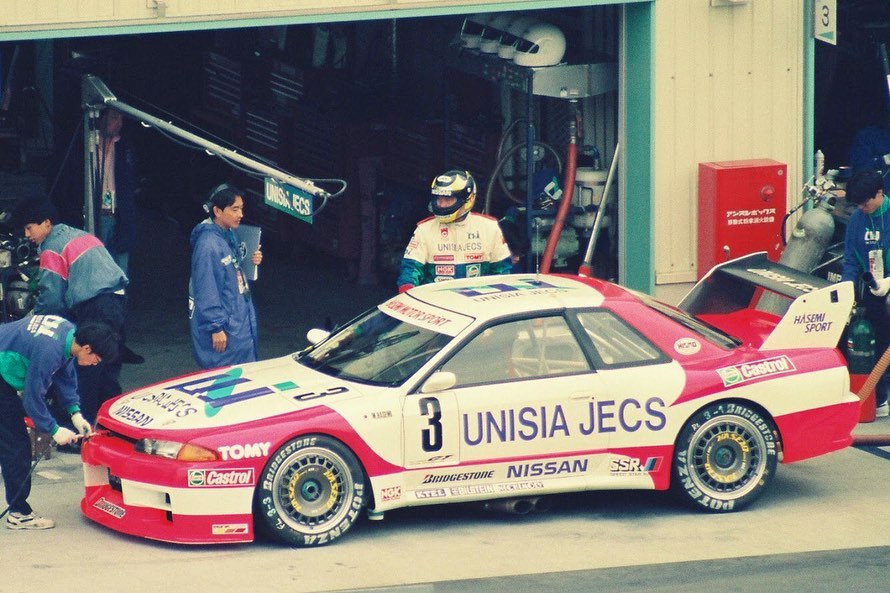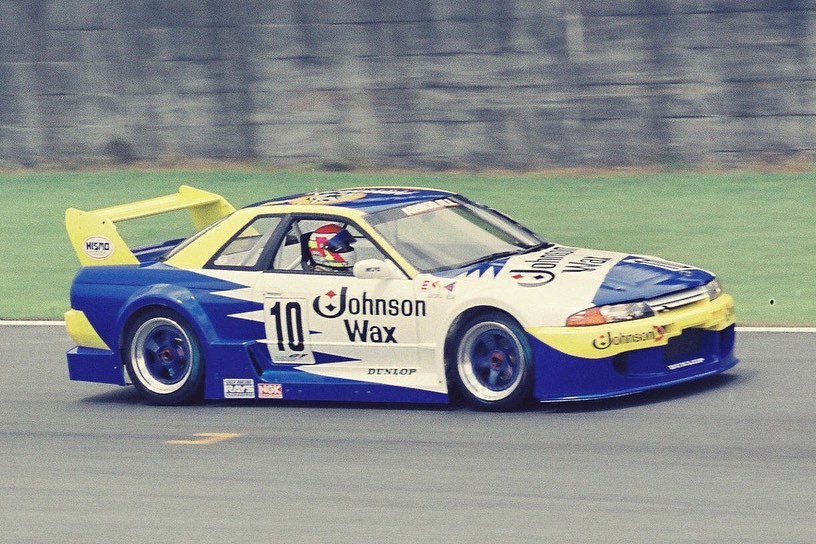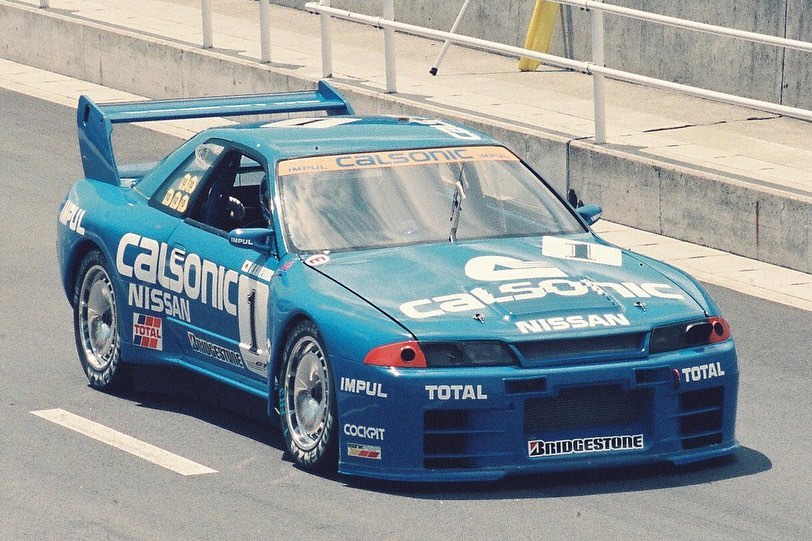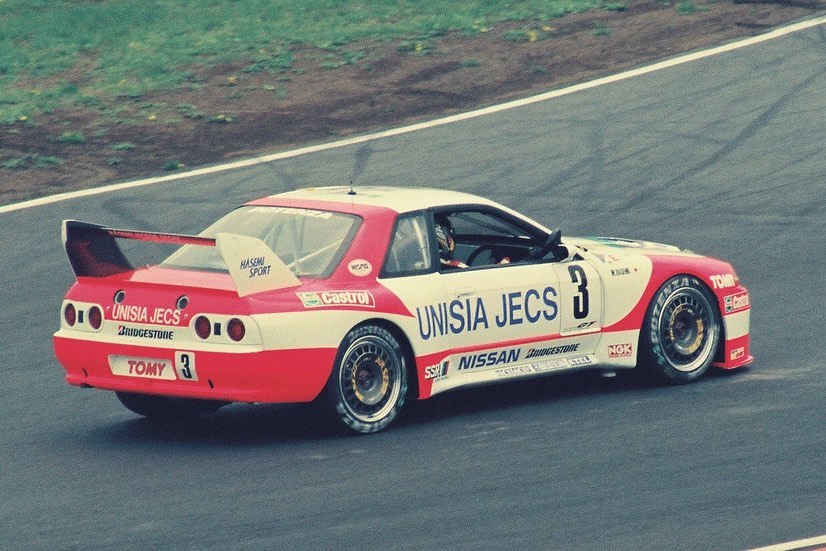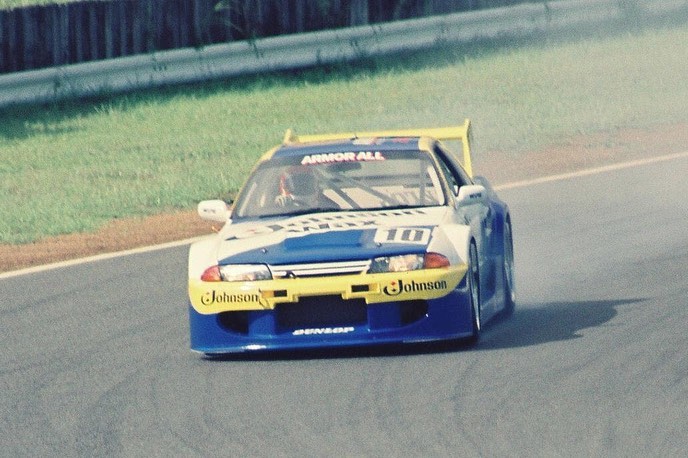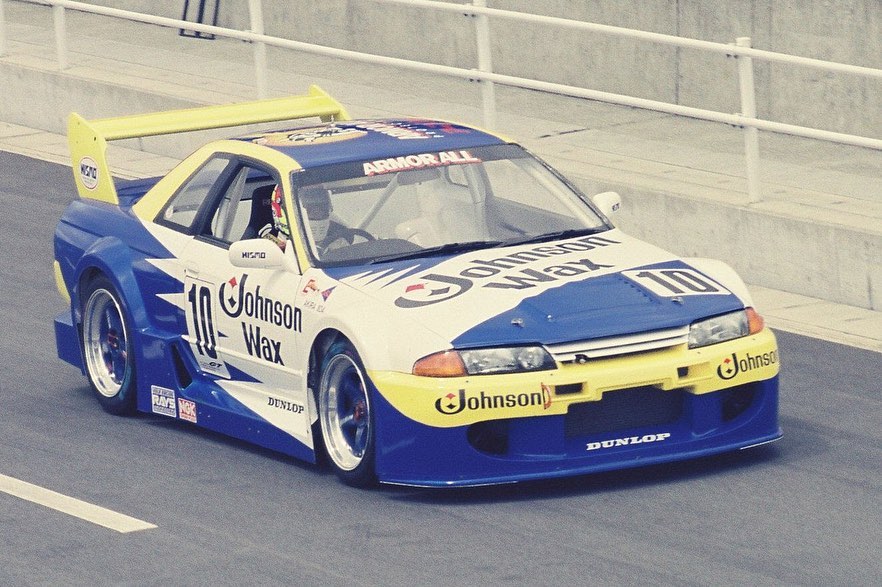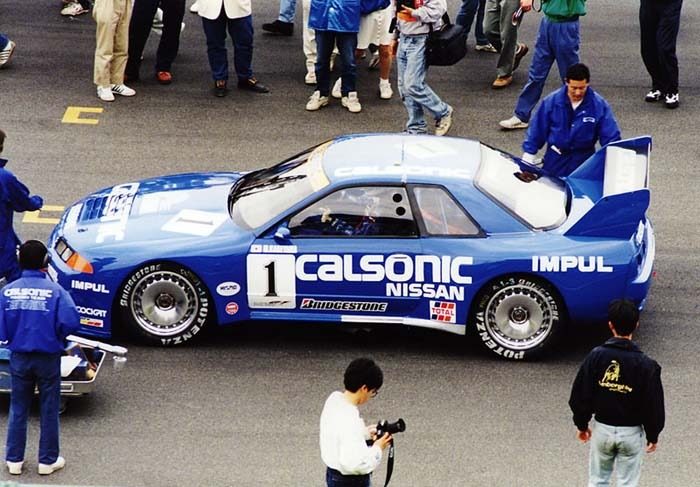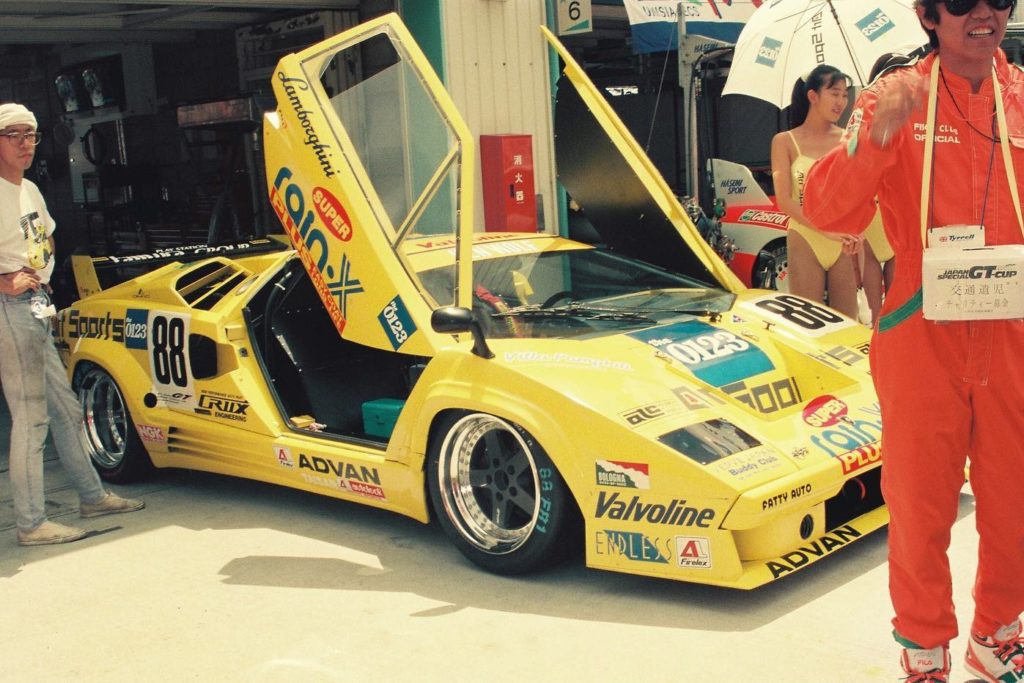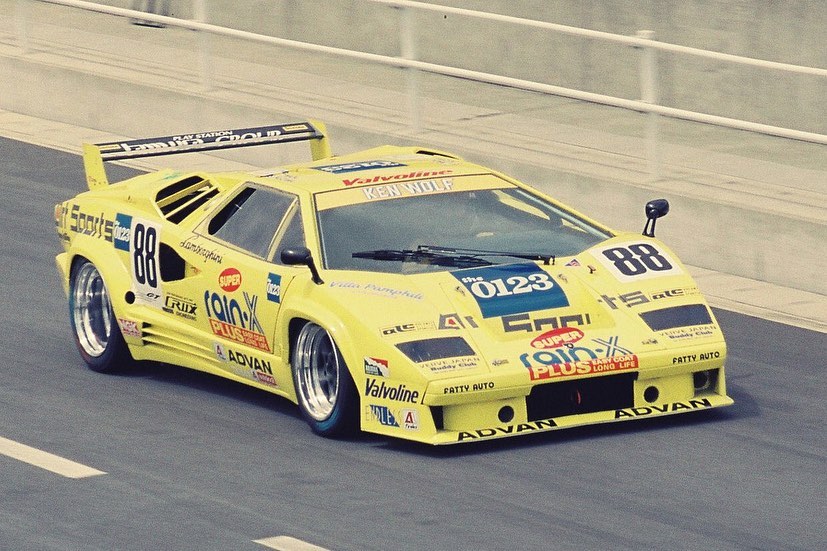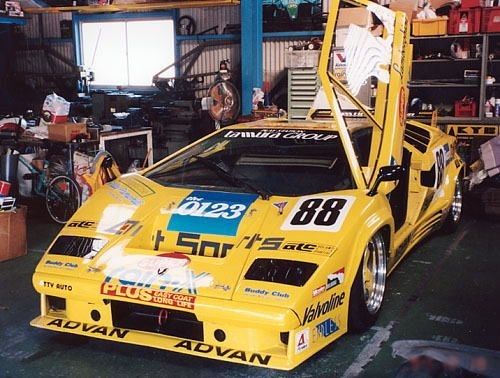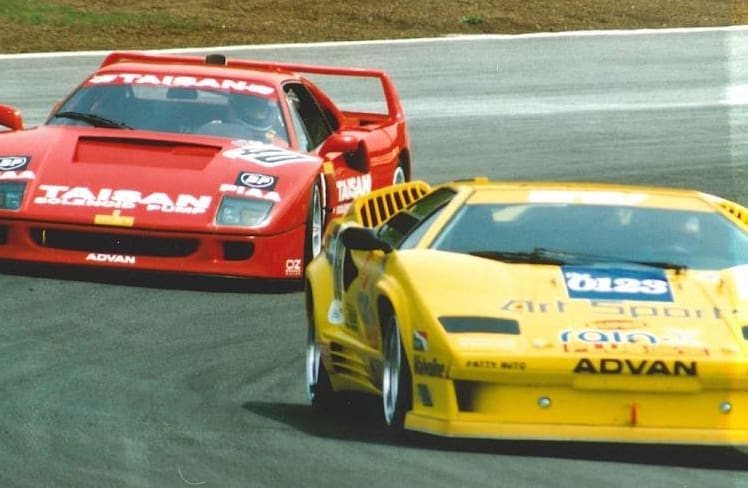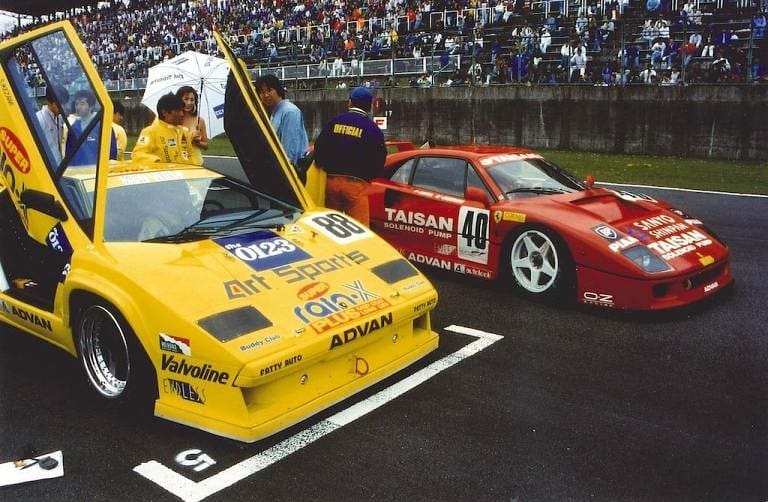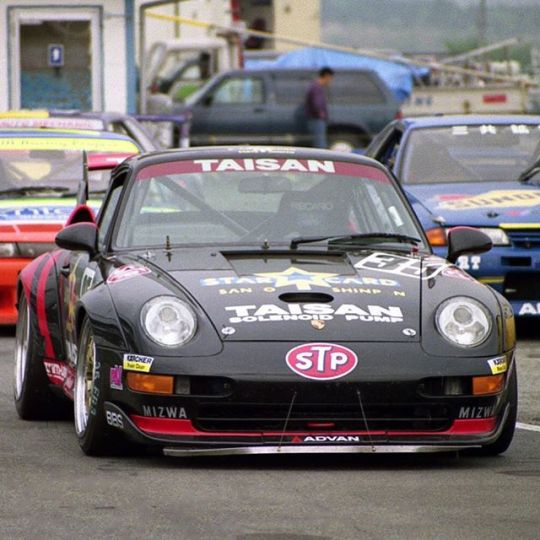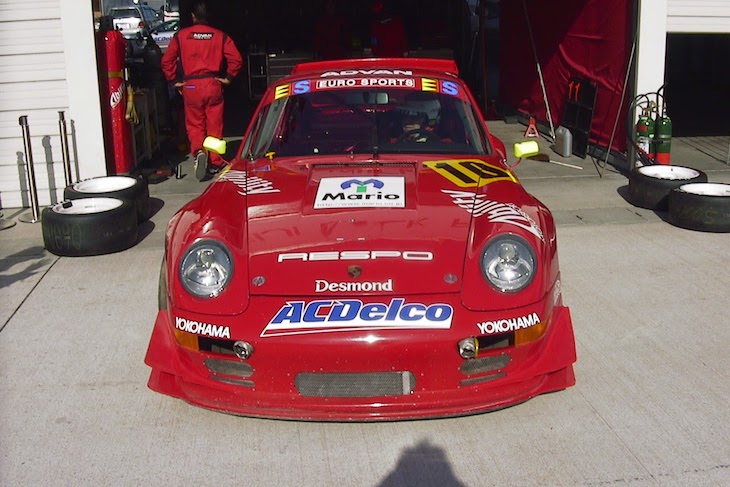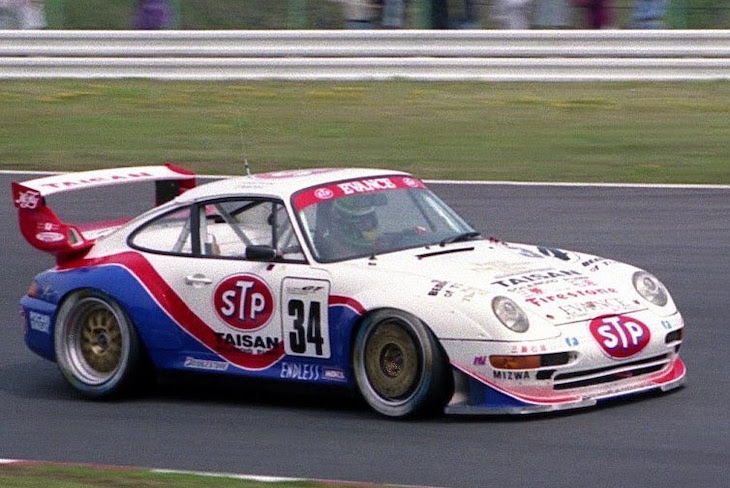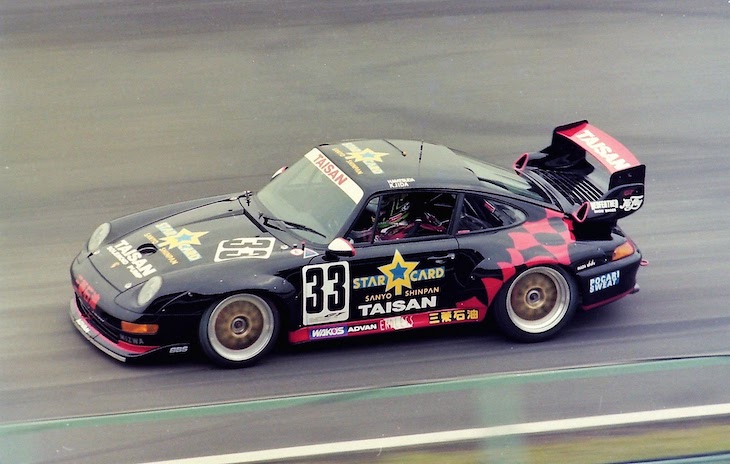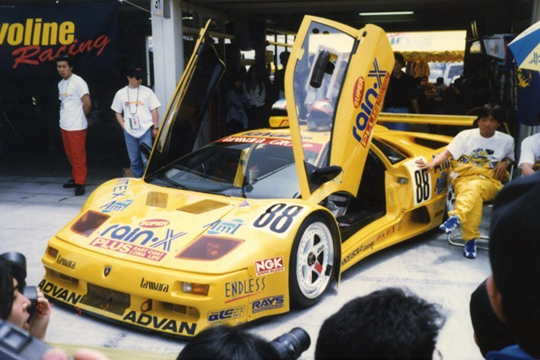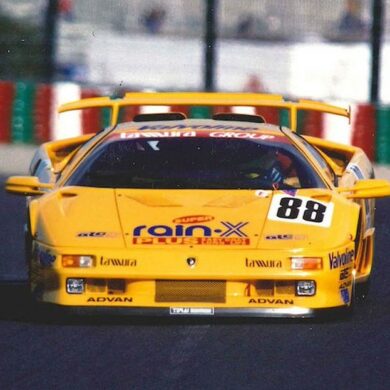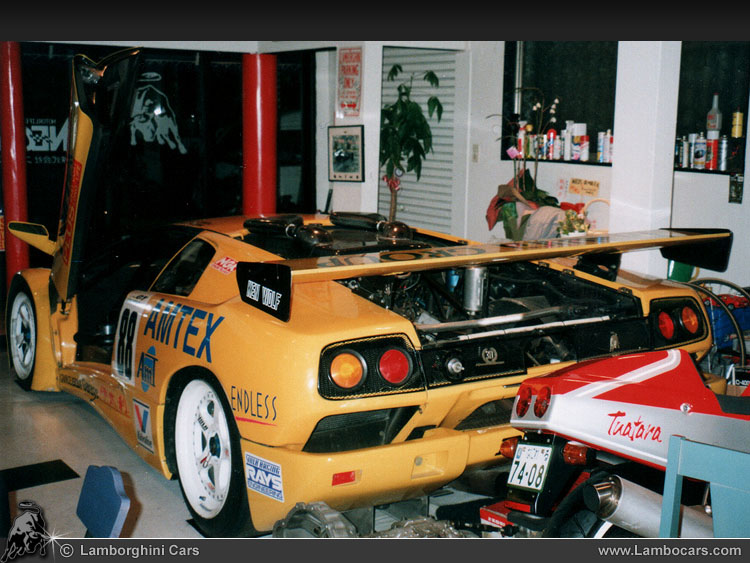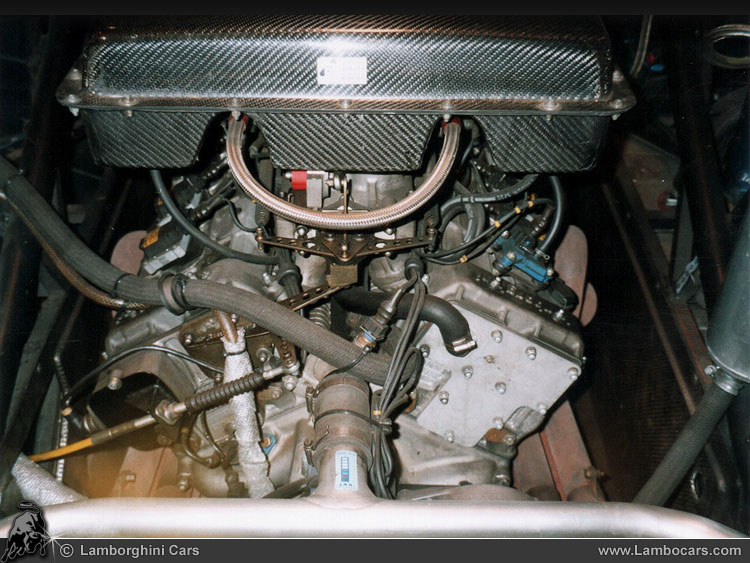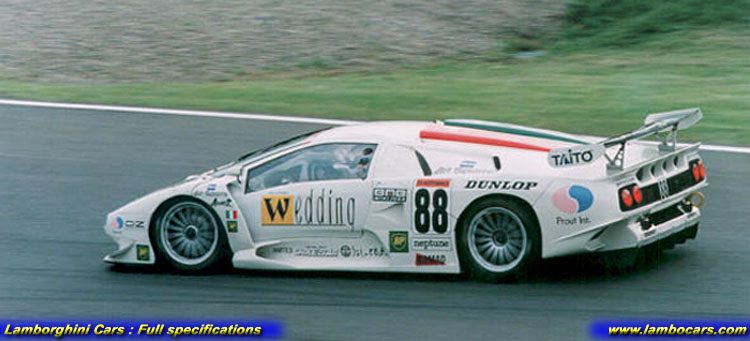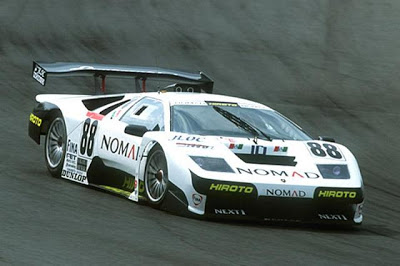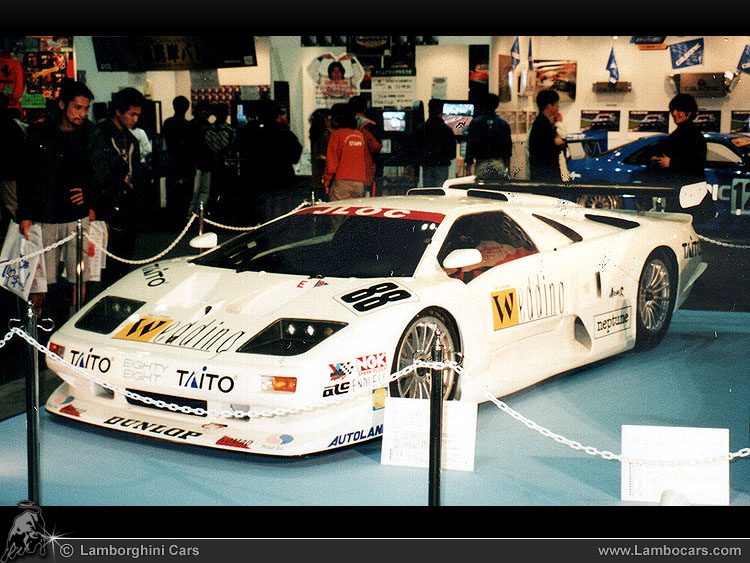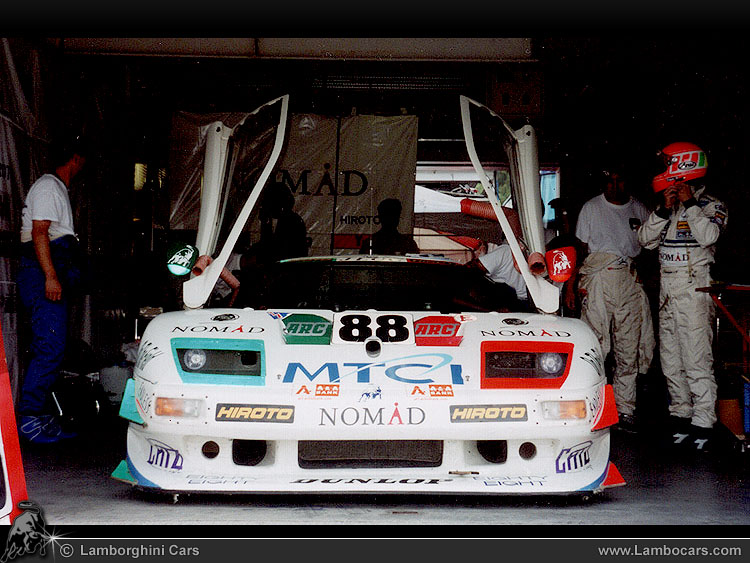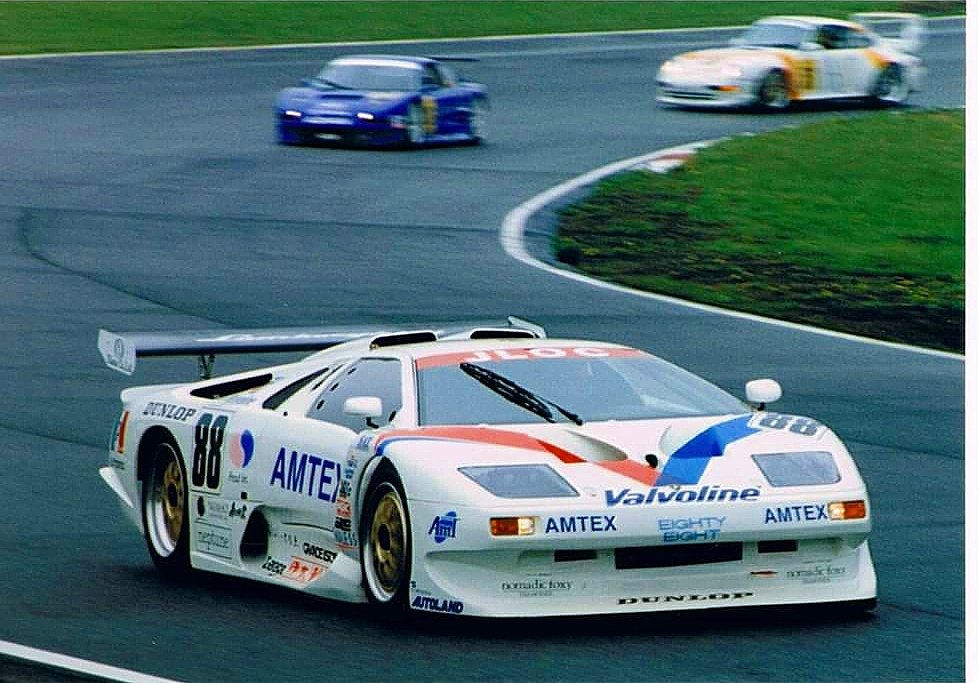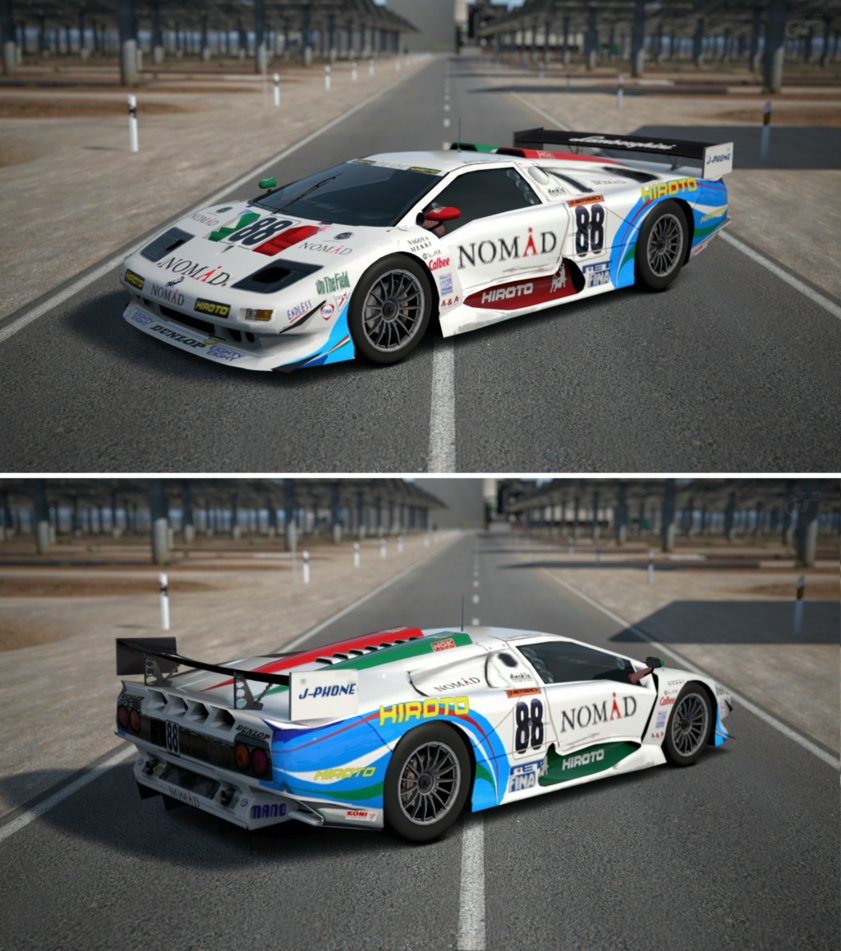
JGTC 1994 – inauguration year


All cars presented in the post and much more are available for racing sim Assetto Corsa HERE. Great historical mega pack that allow you to drive dream car at home.
1994 TAISAN STARCARD F40 JGTC GT1
One of two Ferrari F40 chassis ever seen in all JGTC history. And of course, no one than Team TAISAN to provide that!
The ultimate poster of all teenagers during the late 80’s and early 90’s was not only a successful sports/super car, but it was also a monster in racing across the globe. The first proper-racing F40 was seen during the IMSA GTO days thanks to the great job provided by Michelotto, and it evolved as a GTE/LM, competing also in the Italian GT Championship, the beloved 90’s GT1 class for BPR GT, and eventually at the main racing event of the planet: Le Mans.
Influenced by the success as a race car, Yasutsune “Ricky” Chiba, Team TAISAN boss, decided to bring out the car to Japanese territories. The choice could not be better, of course it was destined to compete in the JGTC. The TAISAN F40 program started officially in 1994.
A curious case involving this chassis is the fact that this wasn’t a Michelotto LM/GTE converted F40 at the first attempt, but it was just street-legal, and prepared by TAISAN directly. Later in the season, it was upgraded to Michelotto specs (not only externally! You know what was upgraded…).
A second chassis was seen to be pair of this later in 1994, with the famous black n’ red ADVAN livery. This one, the TAISAN’s red devil, driven in the final round by Oscar Larrauri and future 1998 JGTC disaster survivor Tetsuya Ota, achieved a sensational victory ahead the Kunimitsu 911 RSR and the teammate’s car (the TAISAN 962C). Team TAISAN ended the 1994 JGTC in second overall for teams ranking with the best combined results of their best-ranked cars.
The car was kept by TAISAN for years, and it was auctioned in 2018 at Suzuka Circuit. The car, although several JGTC modifications, it’s street-legal! I can’t wait to see this thing again in action!
text origin: FB group – japaneseracingcars
1994 TAISAN STARCARD 962C JGTC GT1
Cool things deserves to be REPOSTED, right? Here’s the Group C that competed with JDM legends!
The Porsche 956 and 962 are from the pinnacle of Group C and endurance era in Europe (Le Mans, Interserie, WSPC/WSC), Japan (JSPC) and IMSA GT (the 962) in America. With the Group C’s decadence in 1992-1994, thanks to the 3.5L NA mandatory implemented by FIA to be equal with F1 engines at the time, a few chassis were seen “out of route”, I mean, in other competitions.
Group C decadence means the death of JSPC, the ultimate sports prototype championship here in Japan. To replace it with immediate effect, JAF created the JGTC as a “test-season” in 1993 and then, officially, in 1994.
Team TAISAN was a competitive team specially in the national Group C era. They were completely active in JPSC using several 962 chassis. This one is the chassis 962-164 (fabrication dated from 1990), a spare chassis by the team for JSPC races by 1990-1991. The car raced officially just once that time, at Fuji 500km in 1991.
Three years later, Ricky Chiba decided to bring out the car to the JGTC along with the F40. Both were fitted in the top class, the GT1 (GT500). At the first round held at Fuji, the 962C did the best lap and started from pole, but in 1994, the JGTC start was made as standard (not rolling start), and as an endurance race car, the gearbox wasn’t prepared for it (plus the air restrictors to keep the car between 450-500ps). The BNR32 squad smashed the legendary Group C at the start and during the race.
The TAISAN 962C wasn’t seen in two races that year, the round 2 (Sendai HI-Land) and round 4 (SUGO). During the second venue at Fuji Speedway (round 3), the 962C took once again the pole, and finally finished the race in 1st, with the intruder CALSONIC BNR32 of Masahiko Kageyama finishing in 2nd and the teammate’s F40 completing the podium in 3rd.
In the final round held at MINE Circuit, the immaculate ex-JPSC 962C reappeared for the last time ever in the JGTC. Although it didn’t win this race, it finished in 3rd overall. Anthony Reid, Masahiko Kondo and Mogi Kazuo (Rd1) were the drivers of this car that season.
text origin: FB group – japaneseracingcars
+ Speedhunters post
Lancia 037 Evo 2 Group B 1994
Appearance of a Lancia 037 Evo 2 Group B, at the 1994 JGTC. That year was the first to celebrate the full season, so the ROSSO team decided to put one of the units on the track that he had raced for the last time in 1986, precisely in the Safari Rally.
The appointment chosen was the third round of the championship, held at the classic Fuji circuit. To race in the GT1 category, the car kept its original mechanics, the team modified its settings to suit the Japanese circuit, which was nothing like rally stages. Also, that engine was not adapted for long-life racing. The pilot chosen to drive this rarity was Naohiro Furuya, who had extensive experience with single-seaters but in that category it was his premiere.
It is clear that the car had much larger tires and its body was much closer to the ground than in the rally versions. Regardless, he was a failure, finishing second to last in qualifying and 12th in the race. It was his first and last appearance on the Japanese series.
Text origin: FB group – Techical garage
Nissan SKyline BNR32 GT500 1994
With rules overhaul in 1994, the Touring Car Championship moved on from Group A to JTCC (Japan touring Car Championship) with a 2-liter 4-door sedan. In the GT Championship, with the aim of making the racing more exciting for the fans, the JTCC created a two-class mixed race, and imposed a weight handicap system. This has carried through to today. The Skyline GT-R thus changed it’s racing category from Group A to the All Japan GT Championship, and N1 Endurance Round Series (currently called the Super Endurance Series).
The specifications of Skyline GT-R BNR32 differed depending on the team. While the Calsonic Skyline (IMPUL) on which Masahiko Kageyama drove and Seiichi Sodeyama’s COCKPIT Tatebayashi GT-R were 4WD N3 specifications, Masahiro Hasemi’s UNISIA JECS, the car offered here, and Toshio Suzuki’s ZEXEL Skyline (NISMO) were 2WD FR and the transmission was modified to X-TRAC 6-speed. Akira Iida’s Johnson Skyline (NISMO, from Round 3 of the competition, N1 specification engine, no restrictor, 4WD) also participated. The JGTC regulated engine modifications with air restrictors (around 450 to 480 ps lower than that of in 1993) led to FR conversion because major modifications to the suspension was allowed. As a result, both 4WD and 2WD won one victory each and Kageyama became the champion for the two consecutive years.
More to read on Japanese RacingCars GB page here: Calsonic, Unisia, Johnson, Zexel, Cockpit
1994 JLOC Rain-X Countach JGTC GT1
Here’s one of rarest, and most unique race car to ever race in the JGTC field, and the very first Lamborghini to compete in the japanese championship (as well the first JLOC car to appear there, but under the name of Terai Engineering, deriving from Teruaki Terai, JLOC member at the time)
Terai Teruaki is one of the members of JLOC (Japan Lamborghini Owner’s Club), and has always wanted to put Lamborghini on the track to compete.

In 1993, Terai acquired a burnt-out Countach and planned to enter the All Japan GT Championship starting the following year with Masahiko Mearashi, who was also the editor-in-chief of a car magazine at the time and was also a JLOC member. It was planned to reinforce the burnt chassis and mount a one-piece plastic body.
By the spring of 1994, the machine had not yet been completed. Naturally, we had no choice but to miss Round 1 at Fuji. However, the news of Countach’s participation attracted attention, and the organizers repeatedly requested that they want Fuji to appear.
Therefore, Mouran invited Satoshi Ikezawa 池沢さとしを, a well-known manga artist and racing driver, and succeeded in getting the machine provided by Art Sports. On the other hand, Terai also acquired famous racing driver Takao Wada and Rain X sponsor.
A normal Countach was provided by Art Sports. Even if the luxurious interior was stripped off by force, it was too heavy to race.
The car basically retained the same spec of its road/street mode, such as engine output, clutch, transmission, differential, etc. However, you can see (obviously) some aero modifications comparing with the road-going model. The car is known, also, for being one of last entries for the JGTC in 1994, almost losing their participation in the first race at Fuji Speedway
How it performed? As you can imagine, in a championship were the Skyline GT-R has factory support and a Group C was allowed to race against proper grand touring cars, it was obvious that the stock-ish Lambo Countach was off the pace, the best result in that season was a melancholic 8th place
The team skipped the Countach and decided to develop a new Lamborghini (guess which model they had in 90’s???) directly made to match the Japanese rivals at the time, which mostly of them were getting factory support
text origin: Japnese JLOC blog and FB group – japaneseracingcars
some of 1994 GT300 cars from 1994 that exist for Asscetto Corsa now:
- Korg Racing Team and Hunter #11 – Porsche 964 JGTC GT300 1994
KORG team made a victoriuos 1994 season and won the title. Porsche 964 Carrera RS 3.6L Cup version was used but slightly modified. More info can read here
- BMW E30 JGTC GT300 1995 skins – Taisan team #26, Wakos #71
- Nissan R32 JGTC 1994 – Max Try Racing team #32
Not the only R32 in the field and not the best, but super rare, making only one race during JAPAN SPECIAL GT-CUP on Fuji Speedway
- Toyota Supra MKIV JGTC300 Team Greco/ Shift Point ’94
yes, we had 2JZ-powered Supra at JGTC, but just for a while.
One of those is this Yellow-black tiger skinned Gre-co Supra. Shift Point racing team
Actually it is N1-spec Supra to the JGTC field.
All cars presented in the post and much more are available for racing sim Assetto Corsa HERE. Great historical mega pack that allow you to drive dream car at home.
1996 Mitsubishi Mirage HK51 JGTC 300
Special GT Cup Fuji (13.8.1995) & All Japan GT Fuji 1996 (4.5.1996). Both time Did Not Finish. But how pretty it is. AWD 1.6 Turbo engine.
It was much slower then most of other GT300 cars, beacuse actully it came from Mirage Cup of late 80s. But definetely can be fun especially on curvy tracks. I really wonder when they chose Fuji (high speed track) to participate with this car, instead of race on Sugo, Sendai or Mine. Anyway=)
***
this article is not finished yet and will be updated time to time
***
1995 JGTC PORSCHE 993 GT2
Team TAISAN, during its JGTC times, always tried to be different from other japanese teams, always bringing european race cars to match the japanese competitors. The big example is here. Ricky Chiba’s team entered five (!!!!!!) cars in 1995 JGTC – two F40 and two Porsche 911 GT2 (993). The #34 F40 withdrawal from the championship after round 2, being replaced by another Porsche 993 chassis.
With an “immature” regulations for team scoring yet, TAISAN took an immediately advantage being a team with more than one car… about four in almost all races! But only the highest ranked car during a race should score that time – and this is how they conquered the championship, with the Porsche’s number #33, #35 and #34 winning the races in respectively that year.
1997 TAISAN STARCARD PORSCHE RSR JGTC GT300
Here’s the Team TAISAN Jr. Porsche 911 GT2 RSR entered for GT300 class by 1996. It started as a GT500 car during the first seasons, as the number #33 Porsche 911 GT2, with the iconic ADVAN black and red livery. For 1996, the car was set into a conversion for GT300 class, to replace their two BMW M3 E30 Group A spec.
And Team TAISAN dominated the lower class of JGTC, winning four of six races with this red german horse, smashing the rivals and leaving the second place-scored on drivers standings (910 Racing’s Porsche 911) 25 points far behind. Similar thing happened to GT500 class, which was dominated by Team Goh (LARK McLaren).
The same car with same driver line-up (Morio Nitta and Keiichi Suzuki) remained for the 1997 JGTC season. Despite they having also a great season just like in 1996, for this time, even winning twice and finishing in the podium almost all races, they were defeated by one point on drivers ranking by the Racing Project Bandoh’s SILVIA S14.
Personally, this is one of my favorites Team TAISAN race cars of all time. I would love to post about every single Porsche ran by TAISAN squad – the next one will be a Le Mans one. Stay tuned!
text origin: FB group – japaneseracingcars
JLOC Diablo 1995-1996
After Countach experiment the JLOC team had decided to develop Lamborghini Diablo racing car. Mr. Terai did his utmost to make the car even so he got serious disease, and Mr. (Naotake) Tamura sponsored the production cost of the car. In March, 1995, the car Diablo Jota was completed and participated the GT race from the first race.
But Mr. Terai was died by cancer on August 1995.
In the first season 1995 the team completed four races in five races. 1995 version had stock closed headlights. Next year they were changed to fixed standard lights.
In 1996 the team finished two races in five races.
Then the team decided to develop the next race car.
Entered at 1996 Suzuka’s 1000km race (Valvoline livery), when the classic japanese endurance race was part of BPR/FIA GT during 90’s. JLOC was active on JGTC with this car in GT500 class, and that time cars from N1/Super Taikyu and JGTC could compete for a sole apparition in the year at Suzuka’s 1000km.
The car finished in 28th overall and last for GT1 class cars. Yes, they entered as GT1 for this race!
JLOC Diablo GT-R 1997-2000 (that NOMAD from Gran Turismo sim), 2001
The team organization in 1997, Mr. Hisashi Wada succeeded Mr. Ikezawa and raced with Mr. Takao Wada. The car was newly developped Diablo GTR loaded Hewland sequential 6-speed gearbox fitted tail of the engine, however finished two races in five races because of the problem of gearbox.
In this year the team got 9th in the first race of All Star Race at Twin Ring circuitAnd the car showed a glimpse of her quickness.
In 1998, Mr. Naohiro Furuya instead of Mr. Takao Wada joined the team and Mr. (Shunichi) Funaki became a director. The car was fully modified and named Diablo GT1. The team finished full 6 races and got the maximun 9th position.
In 1999, the team organization is the same of 1998 and finished 4 races in full 7 races. The team got 12th position having serious problem of the car in All Starrace at Autopolice.
In the year of 2001, new car Diablo JGT-1 debuted and drivers were Mr. Naohiro Furuya and former F1 driver Mr. Marco Appicella.
A team owner Mr. Isao Noritake was appointed to a director and a engineer was Mr. Tsunetoshi Terai a chief mechanic at the beginning of team (brother of the late Mr. Teruaki Terai team founder). But the car could not be ready for the first race. 2001 version is signified for it’s new bodywork and absence of rear bumper.
All cars presented in the post and much more are available for racing sim Assetto Corsa HERE. Great historical mega pack that allow you to drive dream car at home.
*** to be continued ***

 Add to favorites
Add to favorites






